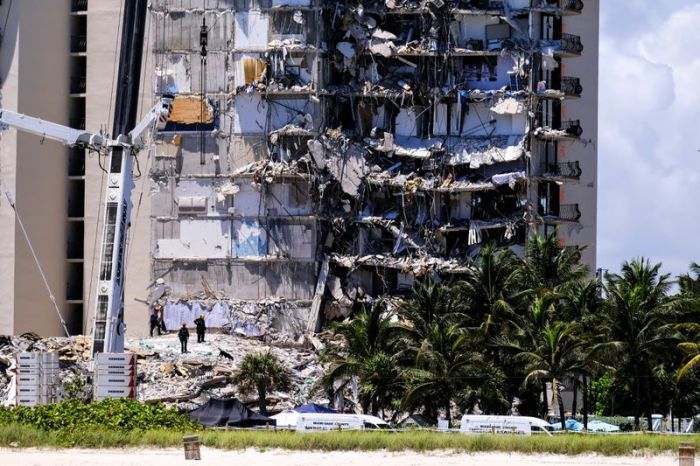SURFSIDE, Fla. (Reuters) – Colonel Golan Vach, head of a unit of the Israel Defense Forces that specializes in search and rescue operations, had never seen a disaster zone like the crumbled condo building in Surfside, Florida, in his more than 20 years of military experience.
Vach’s team, the National Rescue Unit, arrived in Miami early on Sunday, three days after Champlain Tower South partially collapsed without warning while people slept early on Thursday.
Once at the site, they found a massive heap of fragmented concrete and mangled metal, with children’s toys and other personal belongings strewn about. In it, they hoped to find and rescue dozens of missing people in the rubble.
“It’s one of the most difficult and complicated situations that I’ve ever seen,” Vach, who has commanded his unit for four years, said on Tuesday.
Joining forces with the hundreds of American first responders and a team of Mexican rescuers, the Israelis have spent every waking hour either sifting through the four-story pile of debris or meeting with the families of the missing, with two- to three-hour breaks for sleep, Vach said.
More than two dozen of the 150 unaccounted for were Jewish and had links to Israel, according to an Israeli official. Several families had expressed hope the Israeli team, renowned for skills honed during rescue operations at buildings damaged by warfare, would join the frantic search for survivors.
To prepare for the operation, Vach said the teams studied the structure of Champlain Tower South while still in Israel and built 3D models of the 40-year-old high-rise. The team then carefully replicated the manner in which the tower appeared to have collapsed, aiming to understand how to excavate the site with the highest probability of finding survivors.
“We are looking for the bedrooms because people were sleeping,” said Vach, wearing a religious skullcap and army green uniform with an Israeli flag patch on one sleeve.
Vach’s team has consulted with the families to get the best idea of where their relatives might have been within their apartments at the time the building collapsed.
“Our purpose is to get the first responder to understand, where exactly is he digging?” he said.
Once they know where they are on the site, the crews must penetrate meters of concrete in an effort to reach the bedrooms and search for possible cavities where survivors may have found a measure of protection, Vach said.
Authorities have said that they could still find survivors as their search stretched into its sixth day, with 11 people confirmed dead.
The community has not given up. At a makeshift memorial near the site, someone left a flower pot with orchids and a message inscribed: “Estelle, stay strong, come home.”
On the beach, a few hundred meters from the pile of twisted metal and concrete where the tower once stood intact, the word “HOPE” is etched in enormous letters in the sand.
Vach said his conversations with families have been difficult, and his team was committed to being transparent with them as the possibility of finding victims alive grows slimmer.
“There are minor chances,” Vach said. “I would not say there are no chances.”
At the end of their 12-hour shifts, members of the Israeli team meet to talk and process their laborious task.
“Sometimes we cry. It’s natural,” Vach said.
But the team has not given up hope, he stresses, saying that every day it finds new spaces and channels within the layers of debris.
“Maybe there’s a confined space that somebody left, and somebody is alive in there,” he said.
(Reporting by Gabriella Borter and Arlene Eiras in Surfside, Florida; Editing by Howard Goller)


























